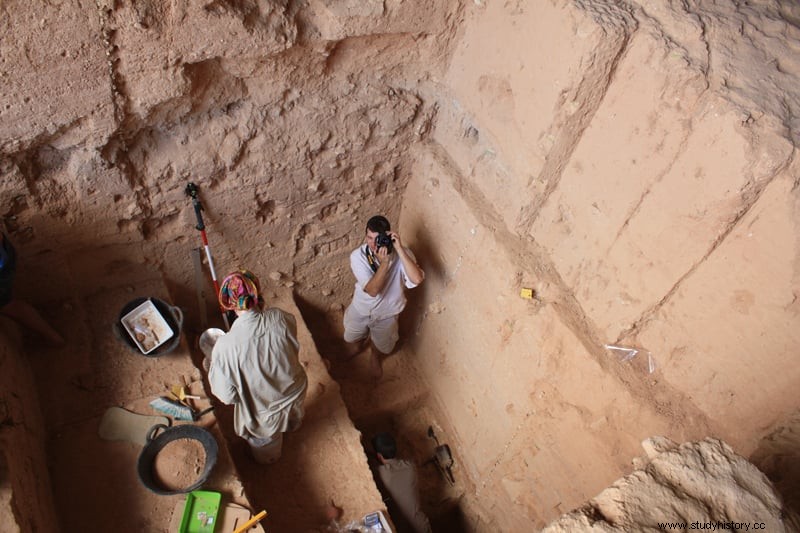The oldest evidence of the use of fire during the Stone Age in Europe is in the Cueva Negra in the Estrecho del Río Quipar, in Murcia. It is a site in which remains of Homo Heidelbergensis have been found. , the direct precursor of Neanderthal Man.
The excavation of the site began in 1990 and the first indications of the existence of an ancient hearth in which a bonfire would have been made appeared in 2011. The fire would date from the final stage of the Early Pleistocene, about 800,000 years ago . The dating has been possible thanks to the fossils of mammals found in the same layer, and the examination using various techniques, such as thermoluminescence and taphonomic analysis, of the pieces of flint and animal bones. The result is that they would have been heated to over 400 degrees Celsius.
The researchers believe that these tests are irrefutable as evidence of combustion at the site, although they still cannot determine if the use of fire spread to other areas from there. In any case the management of fire had to involve great technical skill, which seems out of place at the time. The similarities with other places where evidence of combustion has been found are clear, such as the Wonderwerk Cave in South Africa from a million years ago, or the Israeli site of Gesher Benoth Ya'akov, dated 780,000 years ago.

In some places of the Early Pleistocene the remains of combustion could be due to forest fires caused by lightning or even volcanic ash. But in Cueva Negra it seems unlikely that sparks from a forest fire ignited the interior producing a temperature above 400 degrees Celsius. The archaeologists' theory is that some pieces of smoking wood were still deliberately carried into the cave, where the rain couldn't put them out, so the fire had to be tended.
A fire inside a cave can have several purposes, such as deterring animals from entering the cave, providing heat, or even cooking food. In the latter case, it is impossible to ensure that those who maintained the fire cooked food with it, because no hearths have been found in Paleolithic sites dating back more than half a million years.
The study has just been published by the journal Antiquity.
